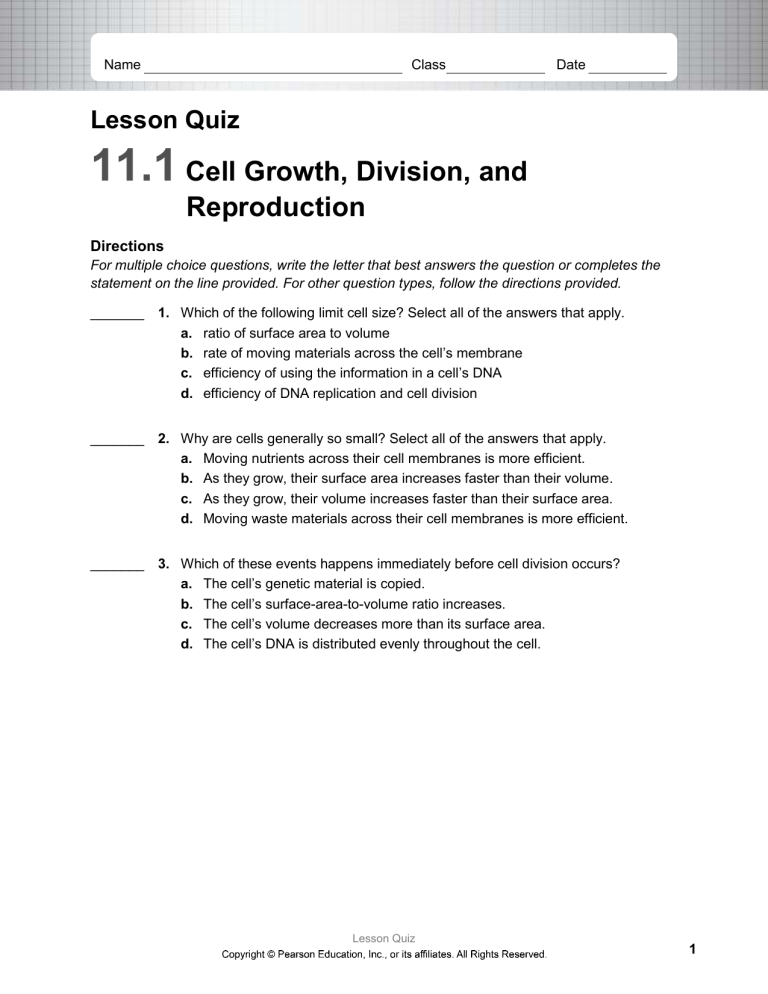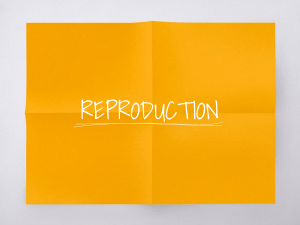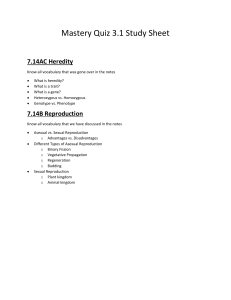
Name Class Date Lesson Quiz 11.1 Cell Growth, Division, and Reproduction Directions For multiple choice questions, write the letter that best answers the question or completes the statement on the line provided. For other question types, follow the directions provided. _______ 1. Which of the following limit cell size? Select all of the answers that apply. a. ratio of surface area to volume b. rate of moving materials across the cell’s membrane c. efficiency of using the information in a cell’s DNA d. efficiency of DNA replication and cell division _______ 2. Why are cells generally so small? Select all of the answers that apply. a. Moving nutrients across their cell membranes is more efficient. b. As they grow, their surface area increases faster than their volume. c. As they grow, their volume increases faster than their surface area. d. Moving waste materials across their cell membranes is more efficient. _______ 3. Which of these events happens immediately before cell division occurs? a. The cell’s genetic material is copied. b. The cell’s surface-area-to-volume ratio increases. c. The cell’s volume decreases more than its surface area. d. The cell’s DNA is distributed evenly throughout the cell. Lesson Quiz 1 Name Class Date _______ 4. Compare the surface-area-to-volume ratios of the three spheres representing cells. Which of the three cells, if any, has the greatest surface-area-to-volume ratio? a. b. c. d. the cell with radius 1 the cell with radius 2 the cell with radius 3 All three cells have the same surface-area-to-volume ratio. _______ 5. How does the size of a cell’s surface area change compared to its volume when the cell grows? a. The surface area remains constant as the volume changes. b. The surface area increases at the same rate the volume does. c. The surface area increases faster then the volume does. d. The surface area does not increase as fast as the volume does. _______ 6. Which describes sexual reproduction, and not asexual reproduction? a. produces offspring that are genetically identical with a single parent b. produces offspring that inherit half of their genetic information from each parent c. ensures all members of a population have equal fitness in their environment d. can occur very quickly, allowing a population to expand into new territory Lesson Quiz 2 Name Class Date _______ 7. Hydras may reproduce by budding. In this process, a small polyp forms on an adult hydra, and then it leaves to become a new organism. Which observation would support the conclusion that budding is an example of asexual reproduction? a. The polyp that buds off the hydra has different DNA from the parent. b. The polyp that buds off the hydra is significantly smaller than its parent. c. Budding may occur in a hydra that has been completely isolated from others of its kind. d. Budding may occur in a hydra that has been raised with many others of its kind. For questions 8 and 9, circle the choice that correctly completes the sentence. 8. When conditions in the environment change, a lack of genetic diversity may be disadvantageous for organisms that reproduce (asexually / sexually). Genetic diversity may be advantageous for organisms that reproduce (asexually / sexually) when conditions in an environment change. 9. The Paramecium uses (asexual / sexual) reproduction when it splits into two identical copies of itself. Two sea urchins use (asexual / sexual) reproduction by producing gametes that join together. Lesson Quiz 3





